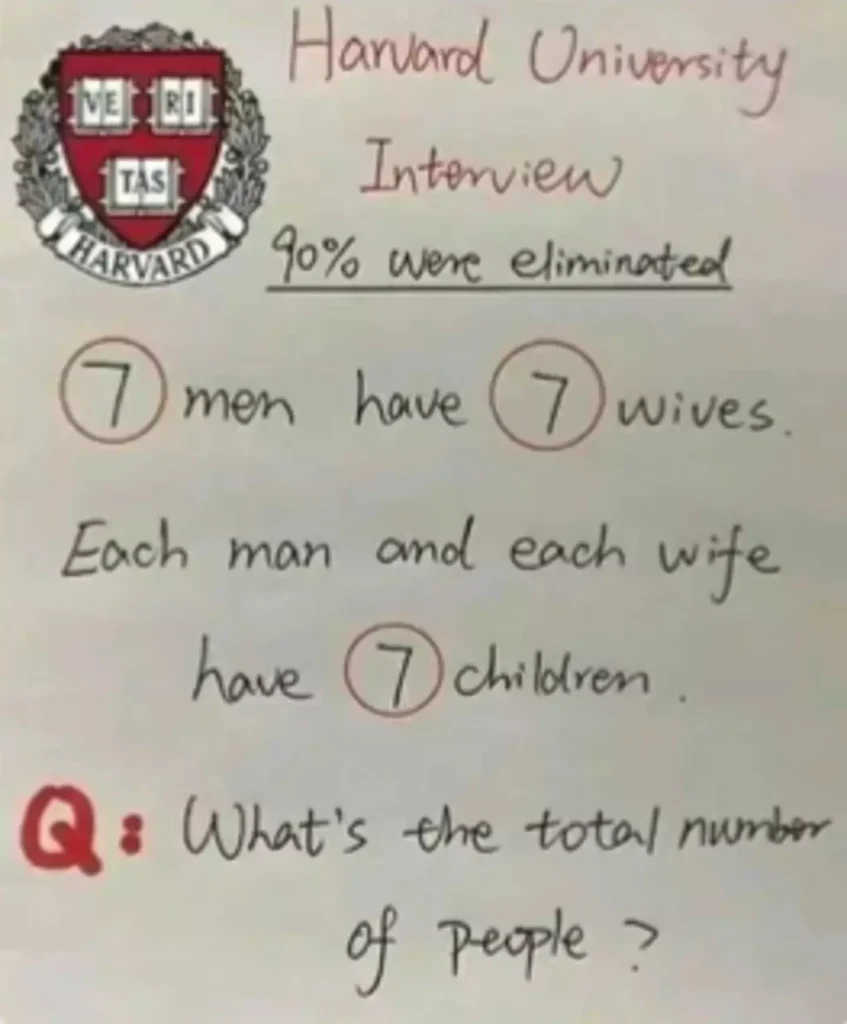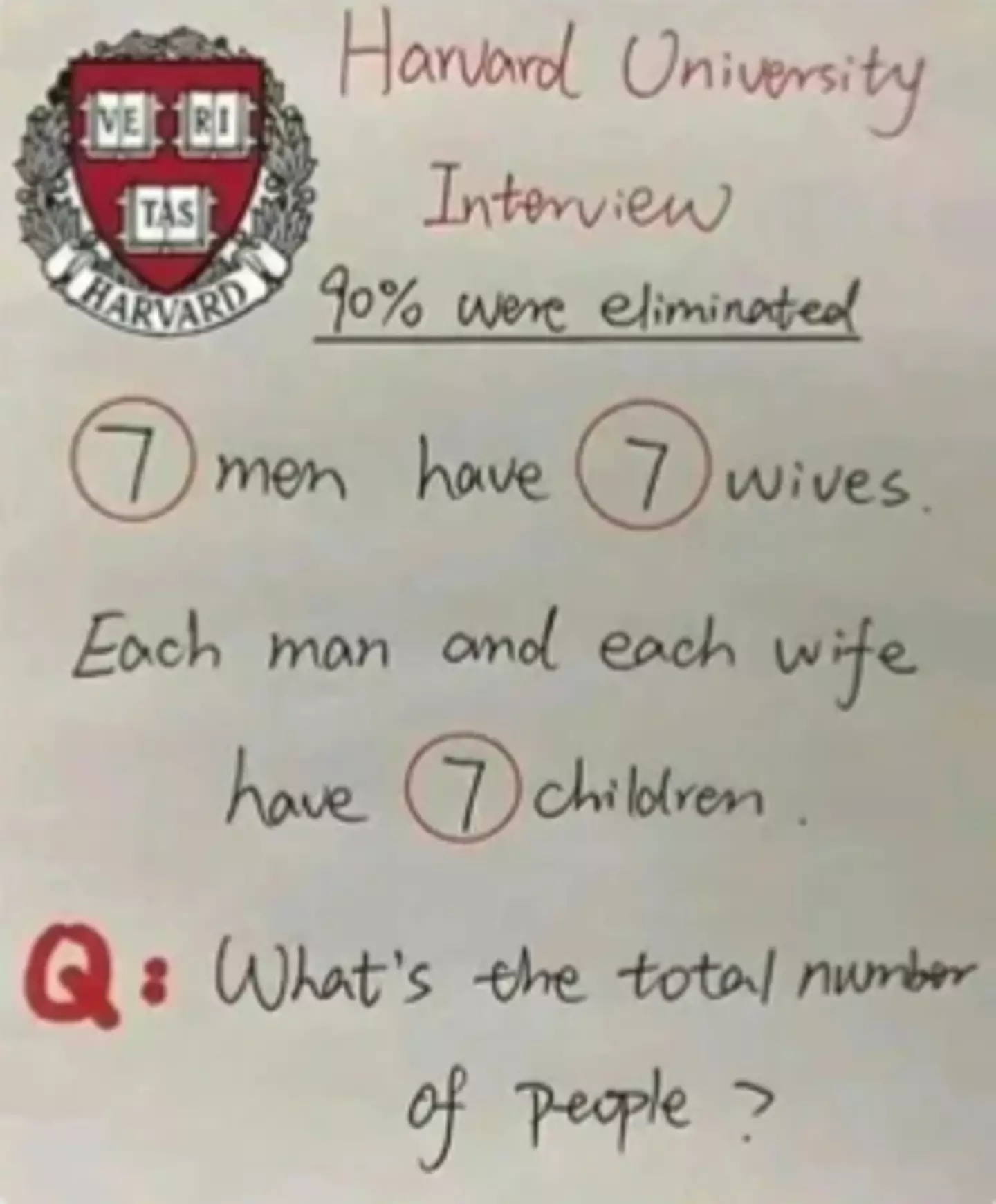This brainteaser is sure to delight any fan of the genre.
The puzzle has circulated online amid claims that it originates at no less a prestigious institution than Harvard University.
A duplicate of the brainteaser handwritten on paper with the institution’s emblem has left people perplexed, even if these assertions have not been confirmed.
However, there’s a specific reason this puzzle is so challenging, and it has nothing to do with the challenging math.
This portion of it is just a straightforward amount of multiplication, but the brainteaser’s meaning is significantly more unclear because of another factor.
But before we get into this, let’s take a look at the actual puzzle itself, which claims that ’90 percent were eliminated’.

It says: “Seven men have seven wives. Each man and each wife have seven children.
“Q: What’s the total number of people?”
You can attempt to resolve it by acknowledging the mildly sexist cliché that the males are just men and the ladies are only “wives.”
Have you figured it out?
Depending on how you read the language, there are two possible interpretations of this.
The first one is to interpret the first sentence ‘seven men have seven wives’ as meaning that the seven men each have seven wives.
So that would be a total of 49 wives and seven husbands, for a total of 56 people.
Then we add in the children, which would be seven for each marriage, so 49 times seven, which is 343 children.
Adding our 49 wives and seven husbands, this brings us to a total of 399 people.
One small issue, though: it isn’t made clear in the opening phrase that each of the males had seven wives.
The sentence could describe more of a Seven Brides for Seven Brothers type scenario, with seven men and seven women making up seven married couples.
This would mean that there are 14 people implied in the first sentence, and the seven couples each have seven children.
So that would be a total of 49 children, and when you add the 14 parents that brings us to a total of 63 people.
Given the way that the first phrase is worded and the fact that bigamy is prohibited in the majority of countries worldwide, you could technically do both, but it seems more likely that the second option is the right one.

